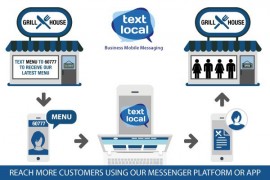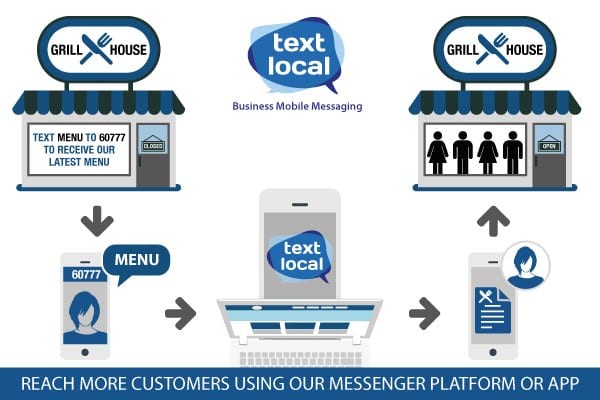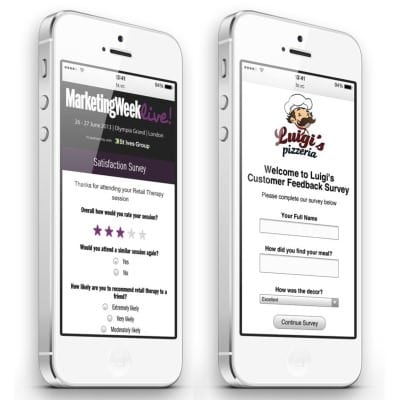How you can use mobile messaging to improve results at every customer touchpoint


Enhancing the customer journey for your business by integrating SMS marketing
Understanding the journey your customers take is crucial to making sure you’re providing the best possible experience. By mapping out potential journeys, you can better understand which customer touchpoints are letting you down and where there’s potential for you to improve; allowing you to develop a comprehensive strategy for success.
Mobile devices have had a significant impact on the customer’s journey, with many relying on their smartphone to visit your website, compare prices, or read customer reviews prior to purchase. Add to this all the other mobile uses, like capturing an appointment with your business in their calendar or Instagramming a photo of their new purchase and sharing their experience on social media, and it’s easy to see how crucial mobile communications have become.
Customer journeys will always be different for individual businesses and customers, but to give you an idea of how easy it can be to integrate mobile into your customer experience, I’ve mapped out an example of a local business for you incorporating 7 steps.
Step 1. Awareness
Your future customer sees an advert for your product or service – on a billboard, in a newspaper, on a leaflet etc. They’re interested enough to want to learn more. They could:
- Type your website address into their phone, hoping they have mobile internet signal and the time to read the details
- Save your phone number, with the intention of remembering to call you later, when they’re less busy
- Text a keyword to a short code (e.g. HELLO to 60777), which takes seconds and, receive an automatic response containing a friendly welcome message and a link to your website. They can review this at their convenience. Seems obvious, doesn’t it?
Step 3. Initial research
The customer goes to use their phone and sees your text, reminding them to look you up. They click the link in the message, and scroll through your mobile-optimised website. It’s the first time they’ve really heard of you, so they’re not quite ready to purchase, but they click the link to follow you on Facebook so they can learn more about you.
Step 4. Learning more
They’ve followed you on Facebook, but only around 2.6% of your followers see each of your posts, so they haven’t seen anything yet, and are starting to forget you. Luckily, you’ve planned ahead and another text message has been sent out to them a few days after the first, so they’ve remembered you and returned to your website. You don’t want to spam them, so you’ve included an opt-out path in your message so they can unsubscribe from your messages easily.

Step 5. The purchase
Whether it’s in-store or online, your ‘future customer’ has made the step to becoming a real customer. Success!
Step 6. Post-purchase
The transaction has been completed, but the customer journey isn’t over. Now is a great time to ask your new customer what they thought of your service, to help you develop the optimum experience. Sending a link to a quick feedback survey in a text message means that they can let you know what they think straight away, without the hassle of back-and-forth messages or finding the time to complete an email survey later.
Step 7. Ongoing loyalty
It’s a well-known fact that selling to an existing customer is more cost effective than trying to attract a new one, so don’t lose touch with your customer after they’ve purchased. Keep your business in their mind with regular text messages – include offers or promotions to increase the likelihood that they’ll return, and to reward them for staying on your mailing list. Remember to include an opt-out in all of your promotional messages, so that they can choose to stop hearing from you if they want to. If you want to learn more about managing promotional messages, download Textlocal’s free e-guide, Promotions and Discounts with SMS.
Of course, every business will have its own unique path to purchase, and customers will come through a wide and varied range of sources. The above journey is just one example – there are many ways that you can use mobile to provide a better experience for your customers at every stage of the RACE framework. Analysing your own customer journeys will give you a good starting point to build the most effective communications strategy for your business.
 Thanks to Victoria Dadson for sharing their advice and opinions in this post. Victoria is the Content Executive at . Textlocal, the UK’s leading provider of mobile messaging services to businesses. You can follow her on Twitter or connect on LinkedIn. Textlocal are a content partner of Smart Insights.
Thanks to Victoria Dadson for sharing their advice and opinions in this post. Victoria is the Content Executive at . Textlocal, the UK’s leading provider of mobile messaging services to businesses. You can follow her on Twitter or connect on LinkedIn. Textlocal are a content partner of Smart Insights.
From our sponsors: How you can use mobile messaging to improve results at every customer touchpoint



